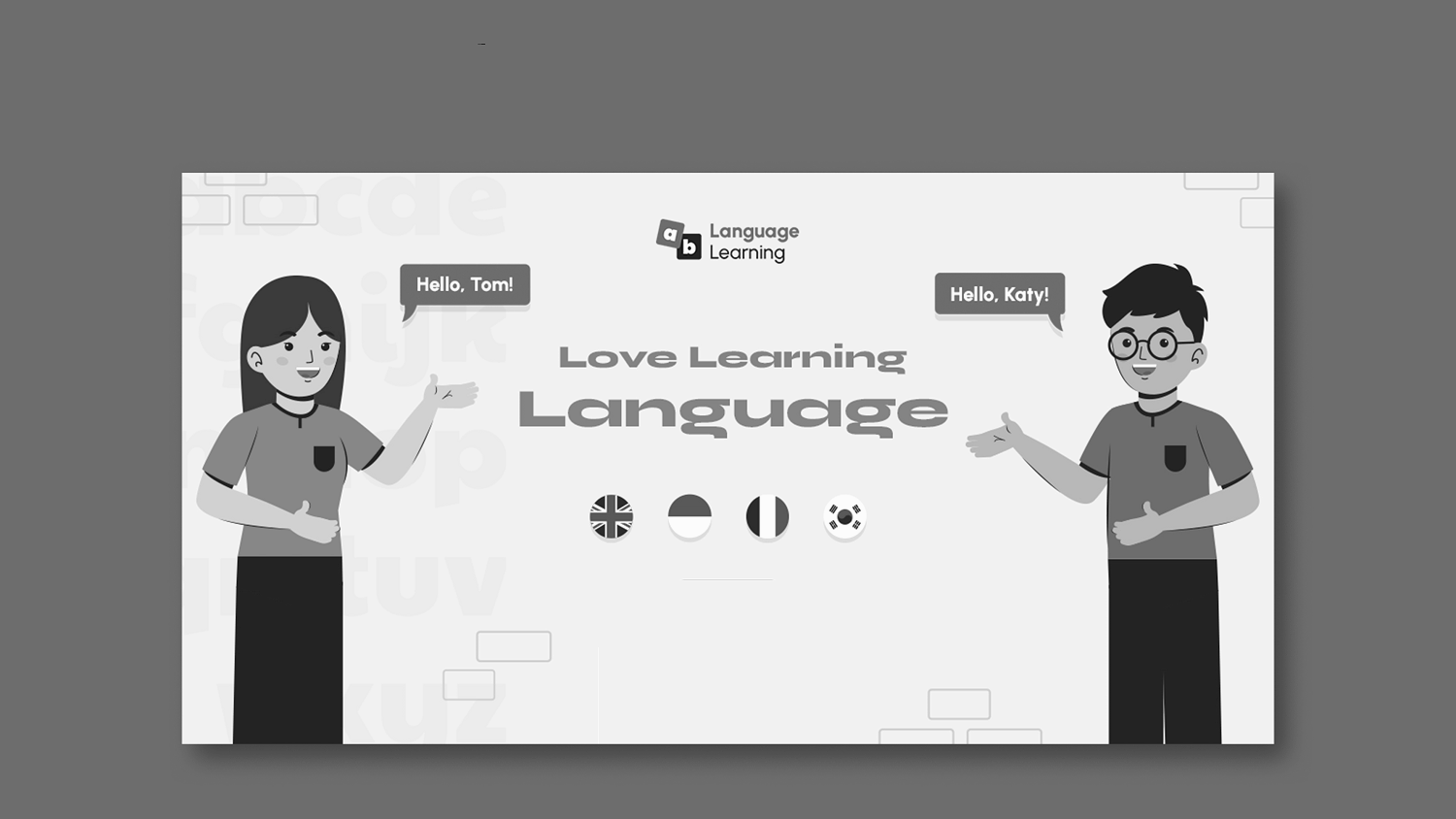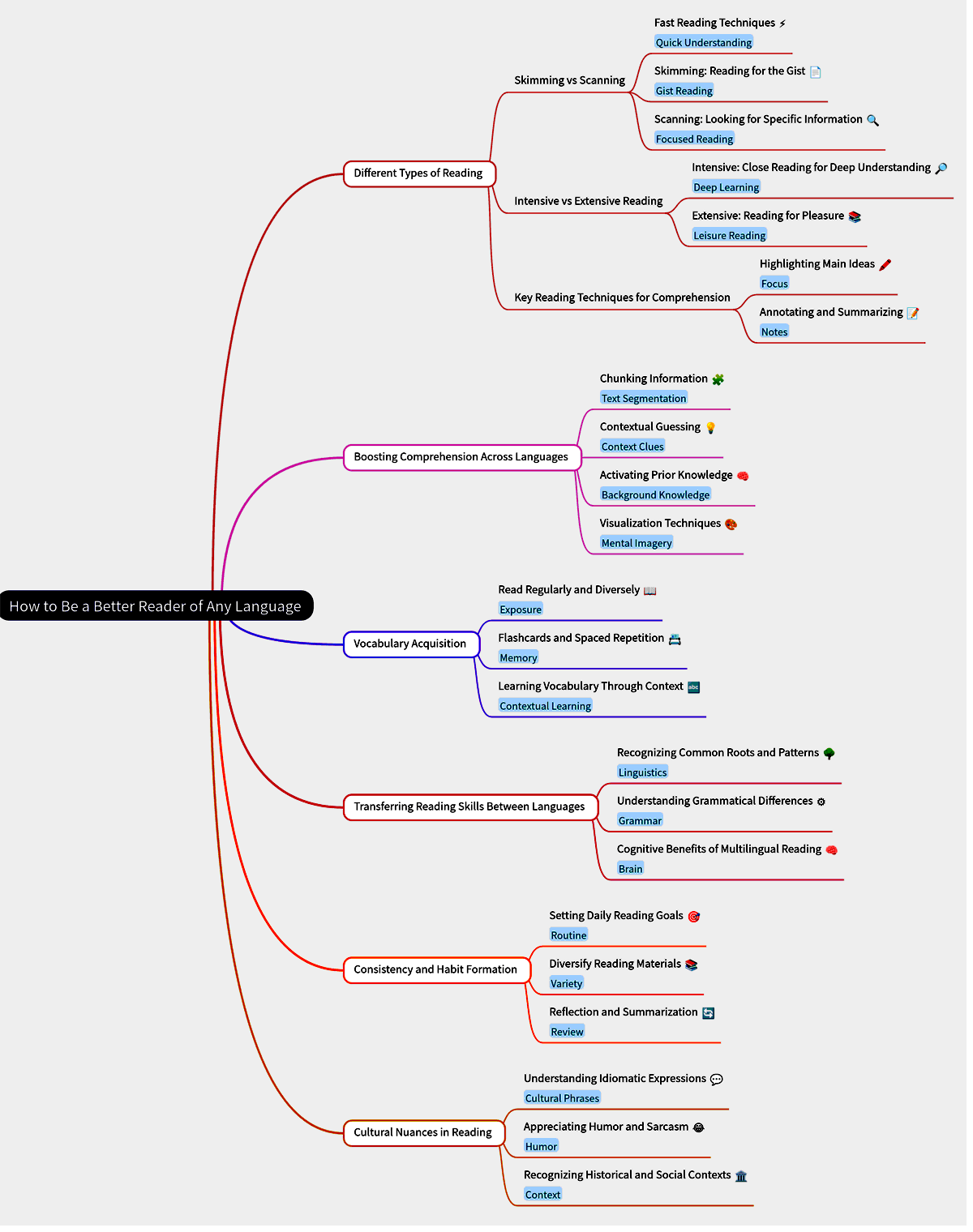
How to Be a Better Reader of Any Language | Improve Reading Skills
Reading is an essential skill in every language, yet many struggle with comprehending texts in languages they are learning or even their native one. Becoming a better reader involves mastering techniques that improve comprehension, speed, and retention, which are applicable to any language. This article offers practical strategies that help anyone—whether a student, professional, or language enthusiast—enhance their reading skills and become more proficient readers.
Understanding the Different Types of Reading
Skimming vs. Scanning: When to Use Each
Skimming and scanning are two distinct reading techniques used for different purposes.
- Skimming involves quickly running your eyes over the text to get the general idea or gist of the content. It is particularly useful when you need to grasp the main points of an article, book chapter, or report without reading every word.
- Scanning is employed when searching for specific information. If you're looking for a particular date, name, or term, scanning helps you locate that quickly.
Both techniques are crucial for time efficiency and should be mastered by readers aiming to improve their proficiency across different languages.
Intensive vs. Extensive Reading: Building Depth and Breadth
- Intensive reading focuses on deep comprehension of short texts. It involves careful analysis of vocabulary, sentence structure, and meaning. This technique is beneficial when studying complex subjects or learning new languages.
- Extensive reading involves reading large amounts of material for general understanding. It improves fluency, expands vocabulary, and is often recommended for language learners to immerse themselves in real-world language use.
The balance between intensive and extensive reading can transform how well and how quickly you process information in any language.

Boosting Comprehension Across Languages
Reading comprehension is about understanding and interpreting what is read. There are universal strategies to enhance comprehension regardless of the language you are reading.
Chunking Information for Better Understanding
Chunking involves breaking down text into manageable pieces. Instead of trying to understand each word individually, chunk words or phrases together. For instance, grouping words by meaning or sentence parts makes reading faster and comprehension more natural. This technique applies across languages, especially those with complex grammar rules, like German or Japanese.
Contextual Guessing: Understanding New Words Without a Dictionary
When encountering unfamiliar words, instead of reaching immediately for a dictionary, try understanding the meaning through context. This method not only saves time but also strengthens your brain’s ability to infer meaning from surrounding information, a critical skill when learning a new language.
For example, if you come across the word “imperturbable” in the sentence “Despite the chaos, he remained imperturbable,” the surrounding words give clues to the meaning, which relates to calmness or being unshaken by events.
Activate Prior Knowledge
Connecting the text you're reading to what you already know can significantly enhance comprehension. Before diving into a text, think about what you already understand about the topic. This approach creates mental hooks that help retain and comprehend new information more effectively.
Visualization: Picture What You Read
A strong technique to improve comprehension is visualization. When reading, try to form mental images of the concepts or stories described. This works particularly well with descriptive texts and can also help in understanding abstract ideas by associating them with real-world visuals.
Vocabulary Acquisition: Expanding Your Word Bank
Improving your vocabulary is key to becoming a better reader in any language. A limited vocabulary hinders understanding, while an expanded one boosts your ability to comprehend even complex texts. Here are a few strategies for enhancing vocabulary:
Read Regularly and Diversely
Consistent reading is one of the most effective ways to learn new words. Read books, articles, and blogs in a variety of genres to expose yourself to different types of language. Reading from different sources introduces new vocabulary in diverse contexts, making it easier to grasp meanings.
Use Flashcards and Repetition
Flashcards are a tried and tested way to memorize new words. Pair them with spaced repetition systems (SRS), a technique that involves reviewing information at increasing intervals. This method is proven to strengthen long-term retention, making it a great tool for language learners.
Learn Vocabulary Through Context, Not Lists
Instead of memorizing long lists of words, learn vocabulary in context. For example, reading a word like “elucidate” in a sentence will help you understand it better than just memorizing the definition. The brain retains words more effectively when they are part of a meaningful context.
Transferring Reading Skills Between Languages
If you're fluent in more than one language, you can leverage your reading skills from one language to improve reading in another. Here’s how:
Recognizing Common Roots and Patterns
Many languages share common roots, particularly in their vocabulary. For example, English shares Latin and Greek roots with many European languages. By recognizing familiar patterns or roots, you can quickly deduce the meaning of new words.
Understanding Grammatical Differences
Each language has its own grammatical structure, but understanding the grammar rules of one language can sometimes aid in learning another. For instance, both Spanish and Italian follow similar sentence structures, so knowledge of one helps in reading the other.
Cognitive Benefits of Multilingual Reading
Reading in multiple languages boosts cognitive flexibility. The mental effort involved in switching between languages improves brain function, memory, and problem-solving skills, which further enhances reading proficiency in all languages you are learning.
Consistency and Habit Formation: The Key to Mastery
Becoming a better reader doesn’t happen overnight. Building reading habits takes time, effort, and consistency.
Setting Daily Reading Goals
Aim to read for a set amount of time or pages each day. Start with a manageable goal, such as 20 minutes of reading daily, and gradually increase as your skills improve.
Diversify Your Reading Materials
Read different types of content—novels, news articles, research papers, or blogs. This variety not only keeps reading interesting but also helps you encounter diverse vocabulary and writing styles.
Reflect on What You’ve Read
After finishing a reading session, take a moment to reflect on what you’ve learned. Summarizing key points or thinking about how the information relates to other things you know will strengthen your retention and understanding.
Cultural Nuances in Reading: Going Beyond the Words
When reading in a foreign language, understanding the cultural context is just as important as understanding the words themselves. Languages are deeply tied to the cultures they come from, and cultural knowledge often provides clues that enhance reading comprehension.
Understanding Idiomatic Expressions
Many languages use idiomatic expressions that don’t make sense when translated literally. For example, the English phrase “raining cats and dogs” simply means heavy rain, but without cultural context, a literal interpretation would confuse a non-native reader.
Appreciating Humor and Sarcasm
Different cultures express humor and sarcasm in unique ways. Understanding how these elements function in a language can significantly improve comprehension of texts such as fiction, articles, or even social media posts.
Recognizing Historical and Social Contexts
Some texts reference historical events, social customs, or political situations unique to a particular culture. A well-rounded reader takes the time to research and understand these references to fully grasp the content of the text.


